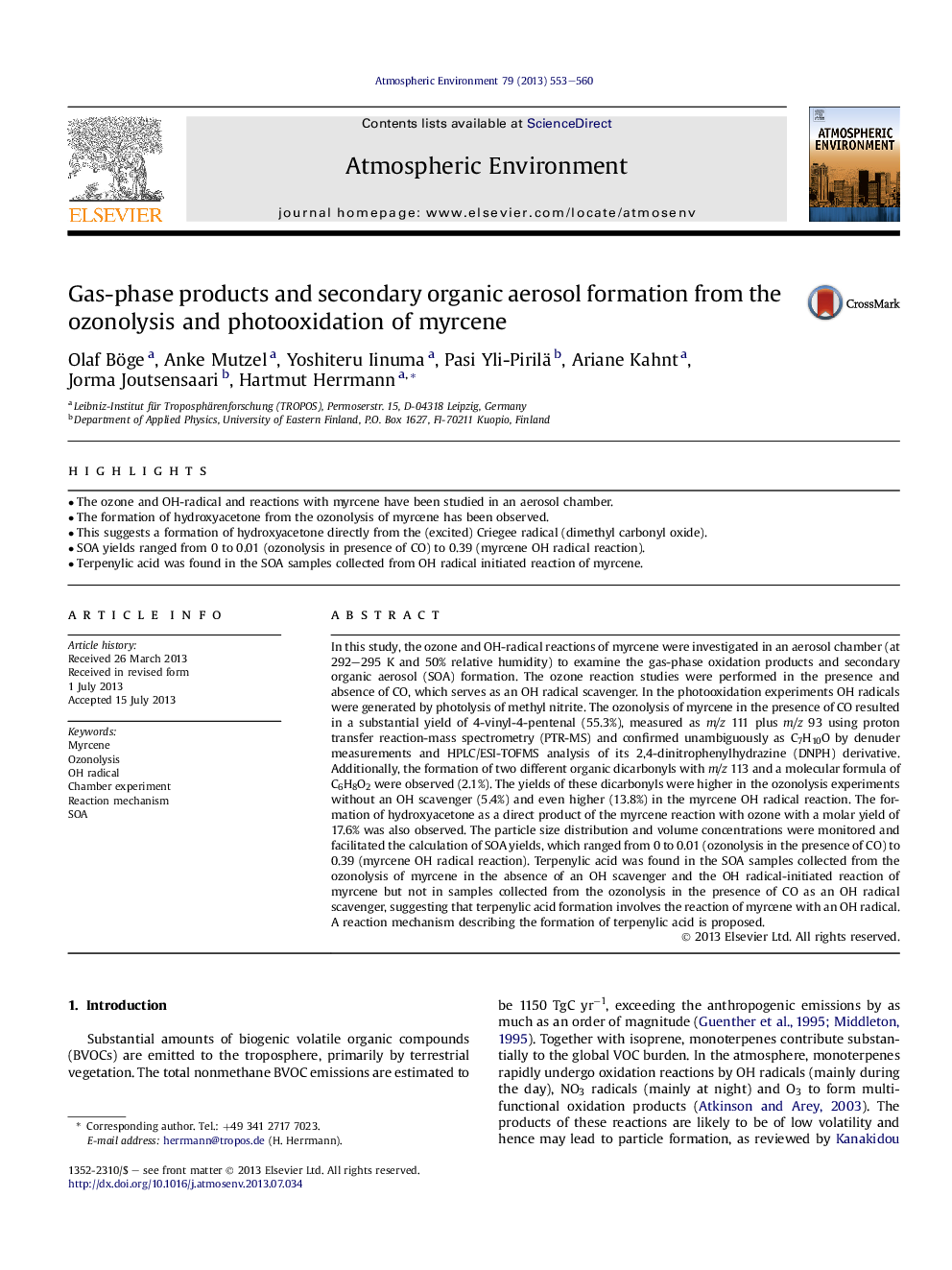| Article ID | Journal | Published Year | Pages | File Type |
|---|---|---|---|---|
| 6341525 | Atmospheric Environment | 2013 | 8 Pages |
â¢The ozone and OH-radical and reactions with myrcene have been studied in an aerosol chamber.â¢The formation of hydroxyacetone from the ozonolysis of myrcene has been observed.â¢This suggests a formation of hydroxyacetone directly from the (excited) Criegee radical (dimethyl carbonyl oxide).â¢SOA yields ranged from 0 to 0.01 (ozonolysis in presence of CO) to 0.39 (myrcene OH radical reaction).â¢Terpenylic acid was found in the SOA samples collected from OH radical initiated reaction of myrcene.
In this study, the ozone and OH-radical reactions of myrcene were investigated in an aerosol chamber (at 292-295Â K and 50% relative humidity) to examine the gas-phase oxidation products and secondary organic aerosol (SOA) formation. The ozone reaction studies were performed in the presence and absence of CO, which serves as an OH radical scavenger. In the photooxidation experiments OH radicals were generated by photolysis of methyl nitrite. The ozonolysis of myrcene in the presence of CO resulted in a substantial yield of 4-vinyl-4-pentenal (55.3%), measured as m/z 111 plus m/z 93 using proton transfer reaction-mass spectrometry (PTR-MS) and confirmed unambiguously as C7H10O by denuder measurements and HPLC/ESI-TOFMS analysis of its 2,4-dinitrophenylhydrazine (DNPH) derivative. Additionally, the formation of two different organic dicarbonyls with m/z 113 and a molecular formula of C6H8O2 were observed (2.1%). The yields of these dicarbonyls were higher in the ozonolysis experiments without an OH scavenger (5.4%) and even higher (13.8%) in the myrcene OH radical reaction. The formation of hydroxyacetone as a direct product of the myrcene reaction with ozone with a molar yield of 17.6% was also observed. The particle size distribution and volume concentrations were monitored and facilitated the calculation of SOA yields, which ranged from 0 to 0.01 (ozonolysis in the presence of CO) to 0.39 (myrcene OH radical reaction). Terpenylic acid was found in the SOA samples collected from the ozonolysis of myrcene in the absence of an OH scavenger and the OH radical-initiated reaction of myrcene but not in samples collected from the ozonolysis in the presence of CO as an OH radical scavenger, suggesting that terpenylic acid formation involves the reaction of myrcene with an OH radical. A reaction mechanism describing the formation of terpenylic acid is proposed.
